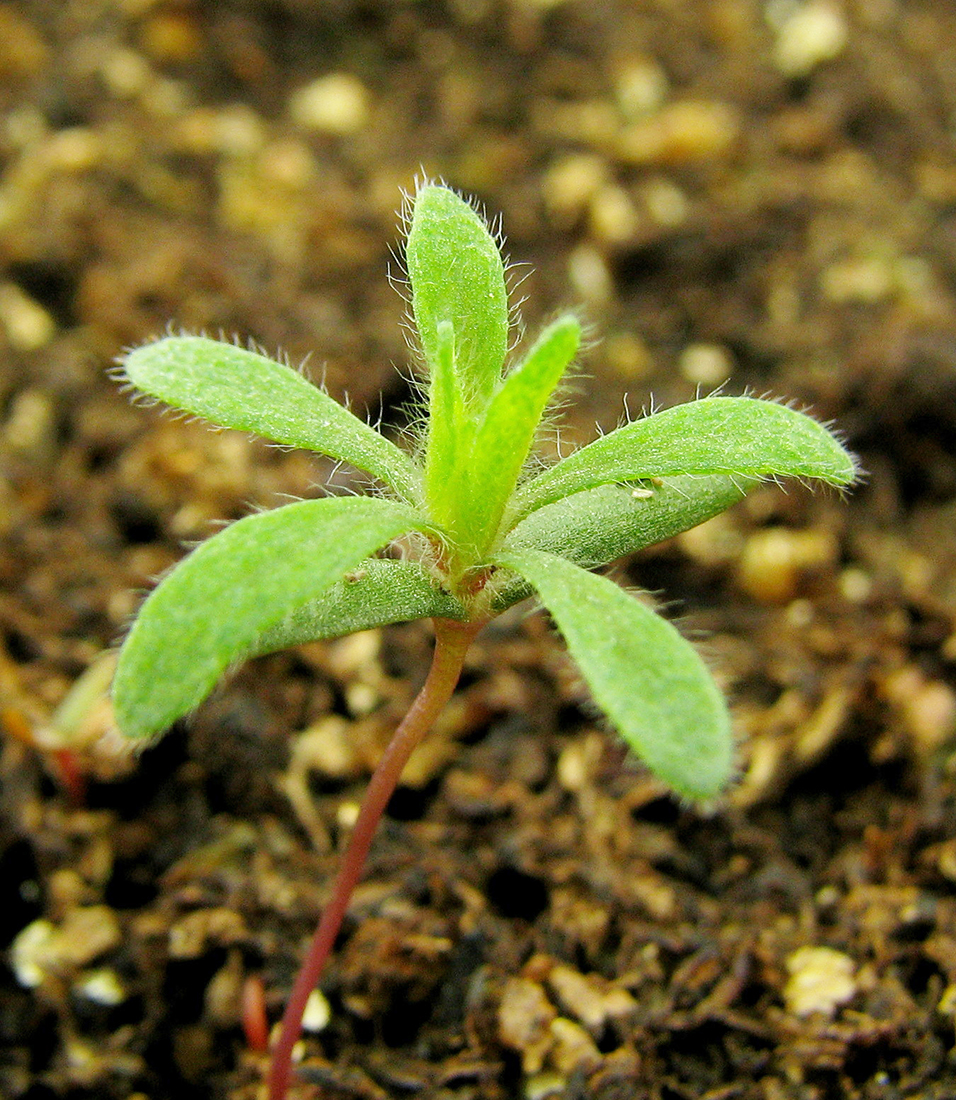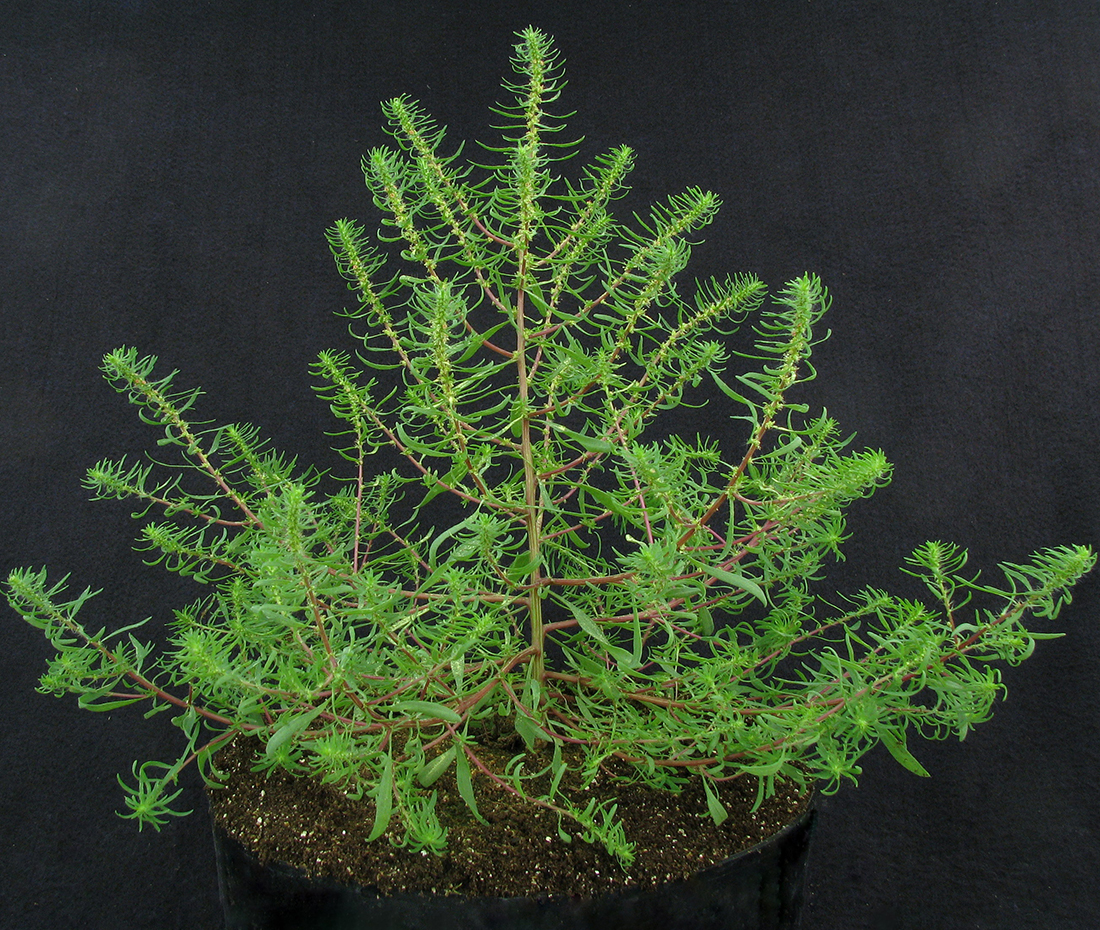Kochia
- Goosefoot family (Chenopodiaceae family):
- Kochia scoparia (L.) Schrad.
- EPPO code:
- KCHSC
- Other names:
- Belevedere, red belvedere, Mexican fireweed, summer-cypress
Species information
- Lifecycle:
- Annual.
- Propagation:
- Reproduces by seed.
- Emergence:
- Seedlings emerge in the spring.
- Habitat:
- Kochia is rarely found in Ontario, however, more recently it has shown up in new seedling alfalfa stands, presumably from contaminated alfalfa seed from Western Canada.
- Competitiveness:
- Kochia densities of six plants/m2 did not reduce yields of oat, but in two of five years a density of 30 plants/m2 caused between 12–31% yield loss (Manthey et al., 1996). In 2014, Lewis and Gulden identified a 5% yield loss action threshold in sunflower at a kochia density of four plants/m2 when they emerged at the same time as the crop.
- Resistance:
- Most populations in Western Canada are resistant to group 2 herbicides and some are resistant to glyphosate. Some Ontario populations are group 2 resistant but there are no known cases of glyphosate resistant kochia in the province.
Identification clues
Seedling
- Cotyledons:
- Elongated, without a stalk.
- First leaves:
- Kochia’s first leaves are elongated and somewhat club-shaped. They are covered in soft, dense hairs. Leaves form a basal rosette.
- Mature leaves:
- Mature leaves grow in alternate orientation, are elongated and somewhat club-shaped, and covered in soft, dense hairs.
Mature plant
- Stems:
- Its stem is erect, much-branched, and often red-tinged with green. It is covered in short, soft white hairs.
- Flowers:
- Kochia’s flowers are subtle, small, round, green and clustered. In many ways, they are like the flowers of kochia’s close relative, lamb’s-quarters.
- Seeds:
- Kochia has bladder-like seed pods with irregularly-shaped brown seeds. The seeds have yellow markings and are grooved on each side.
- Roots:
- Taproot with branched fibrous roots.





Updated: January 13, 2023
Published: January 13, 2023